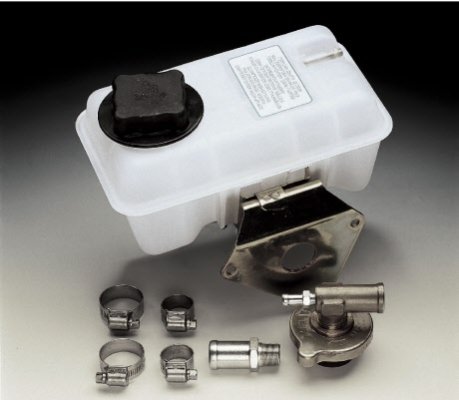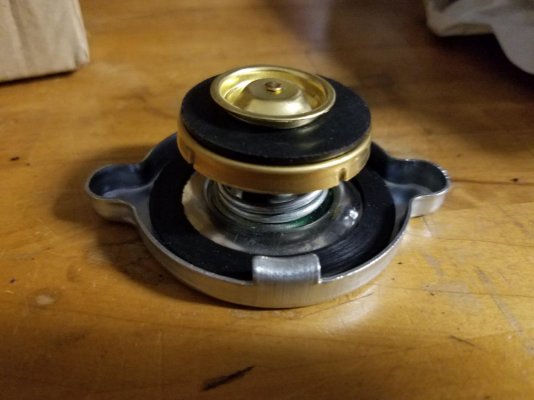Vashon_Trawler
Guru
- Joined
- Jun 13, 2013
- Messages
- 598
- Location
- USA
- Vessel Name
- M/V Sherpa
- Vessel Make
- 24' Vashon Diesel Cruiser
My MD2030 does not have a coolant recovery tank. There is an overflow hose that runs to the bilge; the radiator cap appears to be a standard cap rated for 13 psi. I would like add a tank, so I can more easily monitor my coolant level. Volvo Penta sells a setup that includes a tank, modified cap with hose nipples, and clamps (see pics). Unfortunately, the package costs over $300 (minus the electronic monitoring system)!
Is there an alternative product I can use? I am a little confused regarding how this set-up works. I assume there must be a pressure release valve in this modified cap. If not, how does it maintain pressure to avoid boiling?
Thank you for your help!
Is there an alternative product I can use? I am a little confused regarding how this set-up works. I assume there must be a pressure release valve in this modified cap. If not, how does it maintain pressure to avoid boiling?
Thank you for your help!
Attachments
Last edited:





